In order to generate a more inclusive dataset of Pseudomonas genes mapped to putative in-paralogs and putative orthologs in other Pseudomonas species/strains, we developed a Pseudomonas Orthologous Groups classification system.
To generate ortholog groups, pair-wise DIAMOND searches were run on all genomes in the database to find reciprocal best hits (RBHs) for each gene. These analyses often resulted in multiple candidate genes for RBH status, which were narrowed down by examining the similarity between the query's flanking genes and the hit's flanking genes. If two candidate genes were directly adjacent, they where both accepted as RBHs that involve putative in-parology.
Pairwise intra-genome DIAMOND searches were also performed to acquire in-paralog information (i.e. gene duplications occurring after species divergence). If two genes in one genome were reciprocally more similar to each other than to any gene in the other genomes, the two genes were designated putative in-paralogs. Ortholog groups are built by starting with a seed gene and then adding all genes to which there is a RBH or in-paralog relationship.
Every new gene added to an ortholog group was then treated as a seed gene and the addition process was repeated until all qualifying genes had been added. The result was the development of orthologous groups, specifically generated for Pseudomonas species genomes, which can be used to sort search results.
Pseudomonas Ortholog Group POG003479
| Strain | Locus Tag | Description | Same-Strain Members | Fragment ? | |
|---|---|---|---|---|---|
| Pseudomonas aeruginosa BWHPSA006 | Q019_03536 |
peptidase C39
|
2 same-strain members: Q019_03332 Q019_03536 |
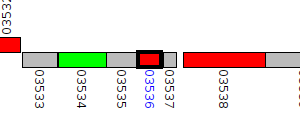
|
|
| Pseudomonas aeruginosa BWHPSA007 | Q020_00547 |
peptidase C39
|
2 same-strain members: Q020_00547 Q020_00838 |

|
|
| Pseudomonas aeruginosa BWHPSA007 | Q020_00838 |
peptidase C39
|
2 same-strain members: Q020_00547 Q020_00838 |

|
|
| Pseudomonas aeruginosa BWHPSA008 | Q021_00457 |
peptidase C39
|
2 same-strain members: Q021_00457 Q021_00664 |
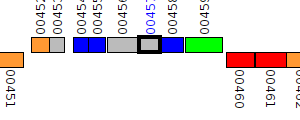
|
|
| Pseudomonas aeruginosa BWHPSA008 | Q021_00664 |
peptidase C39
|
2 same-strain members: Q021_00457 Q021_00664 |
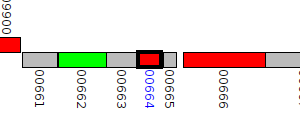
|
|
| Pseudomonas aeruginosa BWHPSA009 | Q022_03302 |
peptidase C39
|
2 same-strain members: Q022_03097 Q022_03302 |

|
|
| Pseudomonas aeruginosa BWHPSA009 | Q022_03097 |
peptidase C39
|
2 same-strain members: Q022_03097 Q022_03302 |

|
|
| Pseudomonas aeruginosa BWHPSA010 | Q023_00153 |
peptidase C39
|
2 same-strain members: Q023_00153 Q023_02085 |
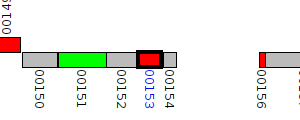
|
|
| Pseudomonas aeruginosa BWHPSA010 | Q023_02085 |
peptidase C39
|
2 same-strain members: Q023_00153 Q023_02085 |
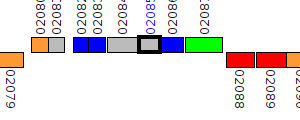
|
|
| Pseudomonas aeruginosa BWHPSA011 | Q024_02521 |
peptidase C39
|
2 same-strain members: Q024_02319 Q024_02521 |
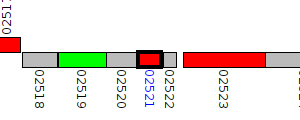
|
|
| Pseudomonas aeruginosa BWHPSA011 | Q024_02319 |
peptidase C39
|
2 same-strain members: Q024_02319 Q024_02521 |
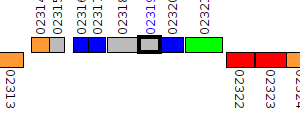
|
|
| Pseudomonas aeruginosa BWHPSA012 | Q025_03375 |
peptidase C39
|
2 same-strain members: Q025_03375 Q025_03172 |
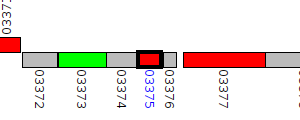
|
|
| Pseudomonas aeruginosa BWHPSA012 | Q025_03172 |
peptidase C39
|
2 same-strain members: Q025_03375 Q025_03172 |

|
|
| Pseudomonas aeruginosa BWHPSA013 | Q026_03645 |
peptidase C39
|
2 same-strain members: Q026_03441 Q026_03645 |

|
|
| Pseudomonas aeruginosa BWHPSA013 | Q026_03441 |
peptidase C39
|
2 same-strain members: Q026_03441 Q026_03645 |
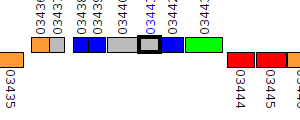
|
|
| Pseudomonas aeruginosa BWHPSA014 | Q027_01110 |
peptidase C39
|
2 same-strain members: Q027_01110 Q027_01314 |
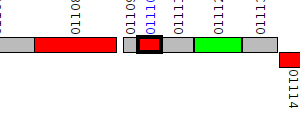
|
|
| Pseudomonas aeruginosa BWHPSA014 | Q027_01314 |
peptidase C39
|
2 same-strain members: Q027_01110 Q027_01314 |
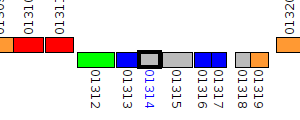
|
|
| Pseudomonas aeruginosa BWHPSA015 | Q028_00049 |
double-glycine peptidase
|
2 same-strain members: Q028_00049 Q028_03317 |
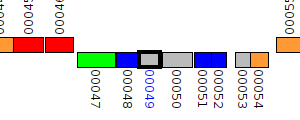
|
|
| Pseudomonas aeruginosa BWHPSA015 | Q028_03317 |
peptidase C39
|
2 same-strain members: Q028_00049 Q028_03317 |

|
|
| Pseudomonas aeruginosa BWHPSA016 | Q029_01313 |
double-glycine peptidase
|
2 same-strain members: Q029_01106 Q029_01313 |
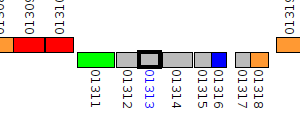
|